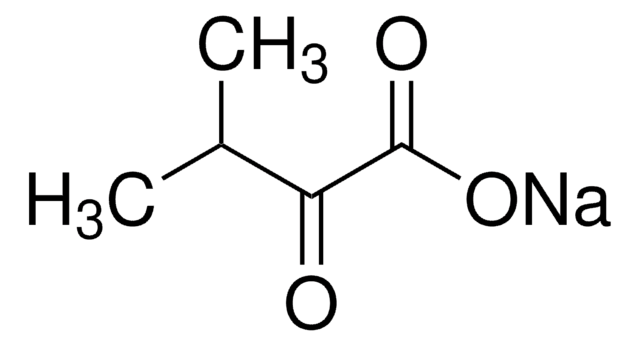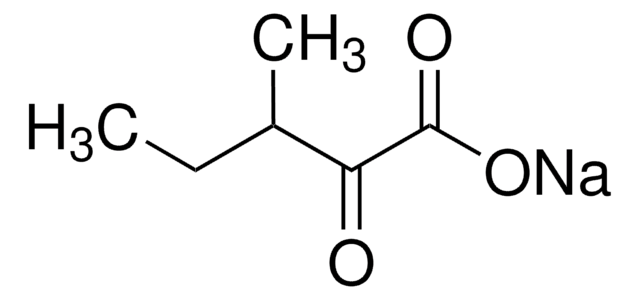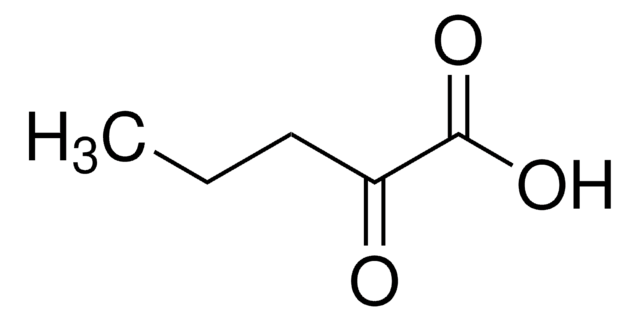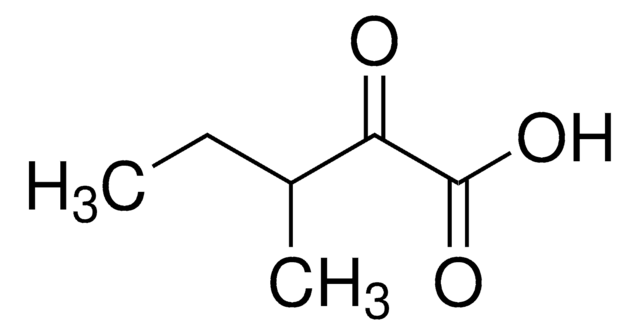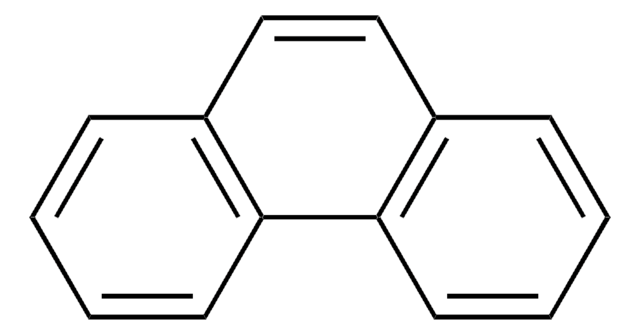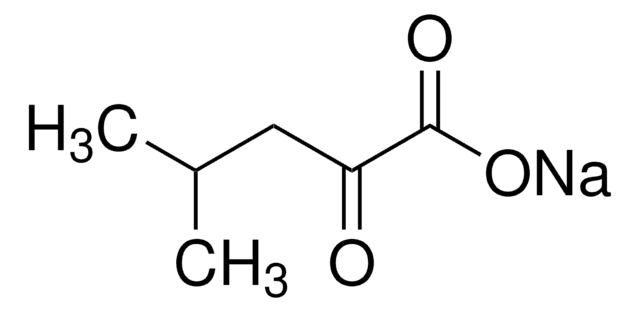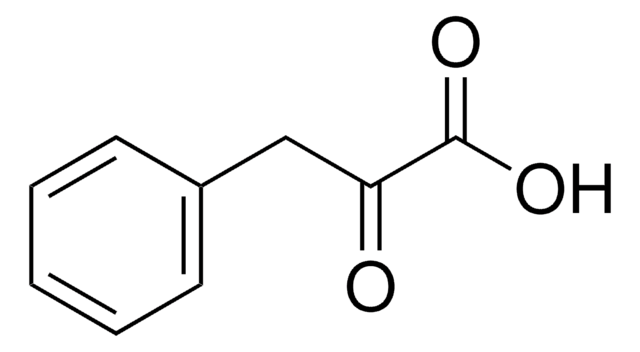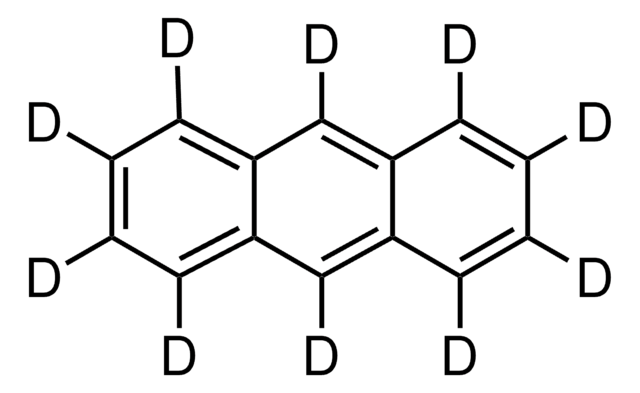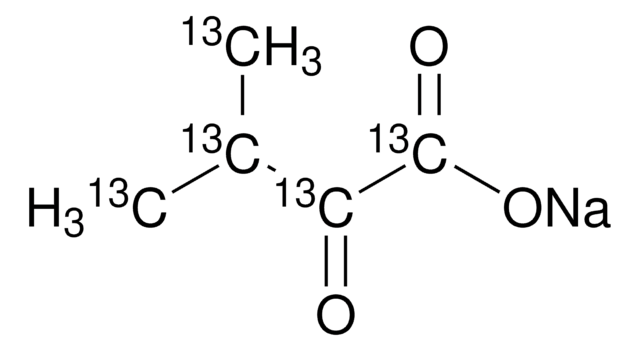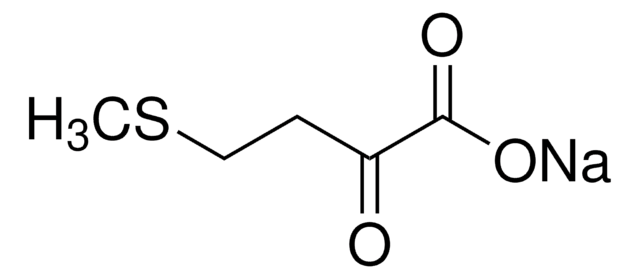68255
4-Methyl-2-oxovaleric acid
≥98.0% (T)
Synonyme(s) :
α-Ketoisocaproic acid, 2-Oxoisocaproic acid, 4-Methyl-2-oxopentanoic acid, Ketoleucine
About This Item
Produits recommandés
Pureté
≥98.0% (T)
Indice de réfraction
n20/D 1.431
Point d'ébullition
82-83 °C/11 mmHg (lit.)
Pf
8-10 °C
Densité
1.055 g/mL at 20 °C (lit.)
Groupe fonctionnel
carboxylic acid
ketone
Température de stockage
2-8°C
Chaîne SMILES
CC(C)CC(=O)C(O)=O
InChI
1S/C6H10O3/c1-4(2)3-5(7)6(8)9/h4H,3H2,1-2H3,(H,8,9)
Clé InChI
BKAJNAXTPSGJCU-UHFFFAOYSA-N
Vous recherchez des produits similaires ? Visite Guide de comparaison des produits
Catégories apparentées
Description générale
Application
- Role in Human Brain Ketometabolism: 4-Methyl-2-oxovaleric acid has been implicated in the temporal patterns of ketometabolism in cerebral microdialysis fluids of patients with traumatic brain injury, underscoring its significance in biochemical pathways within the brain (Eiden et al., 2019).
Mention d'avertissement
Danger
Mentions de danger
Classification des risques
Skin Corr. 1B
Code de la classe de stockage
8A - Combustible corrosive hazardous materials
Classe de danger pour l'eau (WGK)
WGK 3
Point d'éclair (°F)
Not applicable
Point d'éclair (°C)
Not applicable
Équipement de protection individuelle
Faceshields, Gloves, Goggles, type ABEK (EN14387) respirator filter
Faites votre choix parmi les versions les plus récentes :
Déjà en possession de ce produit ?
Retrouvez la documentation relative aux produits que vous avez récemment achetés dans la Bibliothèque de documents.
Les clients ont également consulté
Notre équipe de scientifiques dispose d'une expérience dans tous les secteurs de la recherche, notamment en sciences de la vie, science des matériaux, synthèse chimique, chromatographie, analyse et dans de nombreux autres domaines..
Contacter notre Service technique